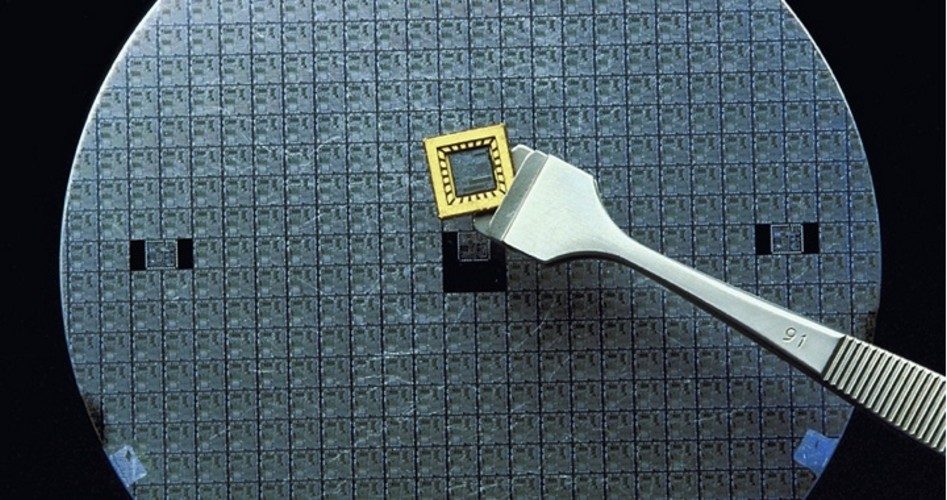
Frank Swain, a British freelance writer, recently wrote an essay published online by the BBC Future Science website entitled: “Why I want a microchip implant.” Like upwards of 10 million Londoners, Swain uses his Oyster card — a credit card-sized smartcard that contains an embedded RFID chip — to pay his fare on public transit such as the Underground and buses within Greater London.
A few years ago, Swain hatched the bright idea of removing the RFID (Radio-frequency identification) chip from the card and embedding it under his skin. His reason for doing so, he writes is, “so that the machine barriers at the entrance to the Underground would fly open with a wave of my hand, as if I was some kind of technological wizard.”
In so doing, Swain went one step beyond a trend that started back in 2008 — riders removing the RFID chip from their Oyster cards and attaching it to their watches or bracelets. Although this did not constitute fare evasion, the TfL (Transport for London) disapproved of the practice and threatened to fine anyone not carrying an undamaged card.
Swain had even lined up a former Royal Marines medic willing to implant the chip in his hand, but he could not obtain the high-grade silicone needed coat the chip and prevent an adverse reaction with his own body. And so his dream of becoming a bionic walking credit card was thwarted!
One would think that coming from the city where George Orwell once resided that Swain might be at least a little fearful of the “Big Brother” potential inherent in having such an RFID device implanted. He addressed such concerns in his essay, but apparently dismissed them as nothing much to worry about.
Swain wrote about Amal Graafstra, a self-described “adventure technologist” and founder of Dangerous Things, a Seattle company that specializes in RFID implants. Graafstra has implants in his hands that he uses to unlock his door, start his motorcycle, and log in to his computer.
While acknowledging that for many people, “the idea of implanting themselves with microchips may conjure up spectres of surveillance and totalitarian control,” Swain apparently accepts Graafsta’s dismissal of such concerns: “Every Hollywood movie has told them that implants are for tracking people. People don’t get that it’s the same exact technology as the card in your wallet. When someone uses a credit card, wireless or not, they are tracked because several other corporations know who they are, when they purchased, how much they spent, and where they spent it.”
While it may be true that every electronic transaction allows the user to be tracked (as is regularly demonstrated on crime shows such as NCIS, Criminal Minds, and Law and Order) an oppressive government would find it easier to track an individual with a data chip imbedded in his body, instead of a card that can easily be disposed of.
Swain writes: “Ultimately, implanted microchips offer a way to make your physical body machine-readable.” Observing that London’s transport authority now allows people to ride the subways and buses using bank cards, he notes: “It marks the beginnings of a slow move toward a world where everything will be accessed from a single RFID microchip. If that day comes, I can’t think of a safer place to keep it than inside my own body.”
It seems that Swain has not thought this process all the way through. Would not making one’s physical body “machine readable” allow any future totalitarian entity to monitor the whereabouts of everyone implanted with an RFID? Not even the Thought Police in 1984 possessed such capabilities!
Since British scientist Kevin Warwick had an RFID implanted under his skin in 1998 in an experiment that allowed him to control lights, doors, heaters, and other devices, many individuals have expressed concerns about the potential abuse of such implants, regardless of what beneficial uses they may have.
VeriChip (later PositiveID, now VeriTeQ) was the first company to obtain a license from the FDA to implant their RFID chips in willing patients in 2004. The procedure was promoted with the benefit that the devices could help doctors verify a patient’s medical information, particularly in emergency room situations.
However, in a letter to the Digital Angel Corporation on October 12, 2004, the FDA stated several risks associated with the VeriChip device:
The potential risks to health associated with the device are: adverse tissue reaction; migration of implanted transponder; compromised information security; failure of implanted transponder; failure of inserter; failure of electronic scanner; electromagnetic interference; electrical hazards; magnetic resonance imaging incompatibility; and needle stick.
The manufacturer also marketed the implant as a way to restrict access to secure facilities such as power plants, but it was later demonstrated that the 16-digit ID number contained in an RFID implant could be obtained and cloned using a hand-held scanner.
Beyond the physical and security risks associated with the implants, the ultimate danger is that — in the wrong hands — they may constitute a real threat to the level of personal privacy that Americans have expected since the Fourth Amendment first prohibited unreasonable search. A key factor in deciding how intrusive such searches might become is whether or not the decision to have the RFID implanted is voluntary or mandatory. Even if an individual voluntarily agrees to have a chip implanted, however, he should consider that a government entity might be able to collect data from the RFID without his knowledge.
AP writer Todd Lewan noted as far back as 2007 that civil libertarians and Christian conservatives were warning that RFIDs “would soon enable the government to ‘frisk’ citizens electronically — an invisible, undetectable search performed by readers posted at ‘hotspots’ along roadsides and in pedestrian areas.”
Lewan also reported that the use of electronic microchips was proliferating, first being used to track livestock, fish, dogs, cats, and racehorses, and finally a company called CityWatcher.com, which provided surveillance equipment, had RFIDs implanted in two of its employees. The company’s CEO, Sean Darks, dismissed suggestions that there was anything wrong with the procedure by asserting that his employees had volunteered for the procedure, saying: “You would think that we were going around putting chips in people by force and that’s not the case at all.”
But Katherine Albrecht, a privacy advocate specializing in consumer education and RFID technology, suggested that “suggestions” coming from higher ups were not always so voluntary. “Ultimately,” said Albrecht “the fear is that the government or your employer might someday say, ‘Take a chip or starve.’ ”
Thanks to the media’s exposure of the threat to our privacy and freedom that the widespread use of RFID implants in humans would present, many Americans are prepared to oppose this dangerous practice.
Related article: National Healthcare Will Require National RFID Chips



